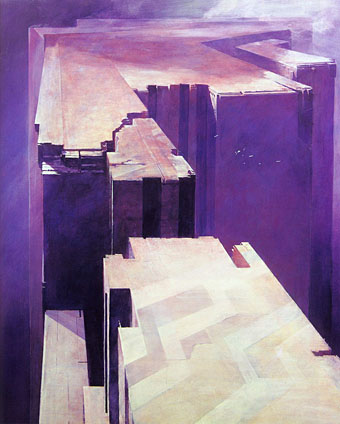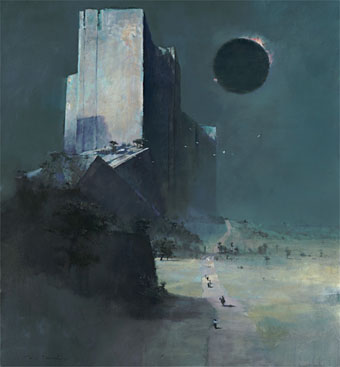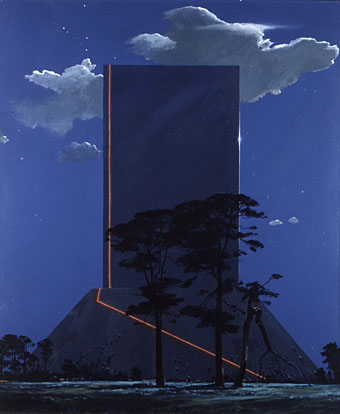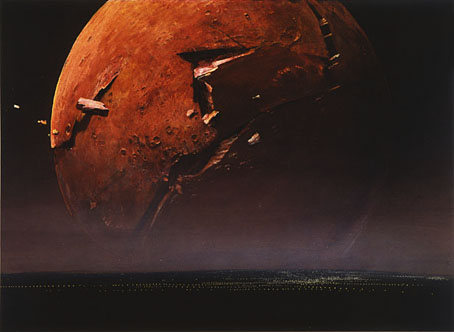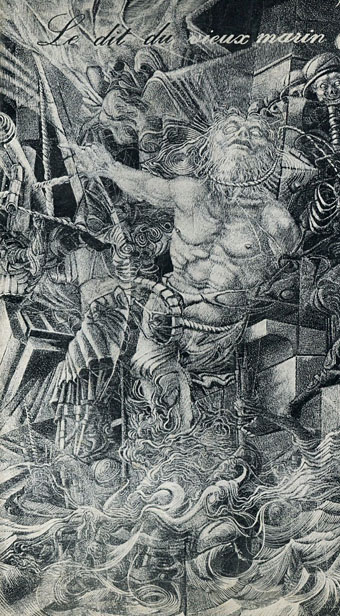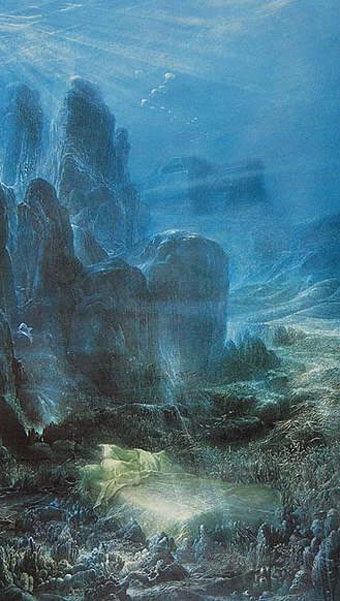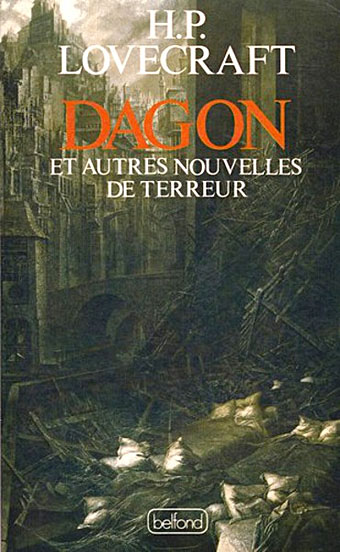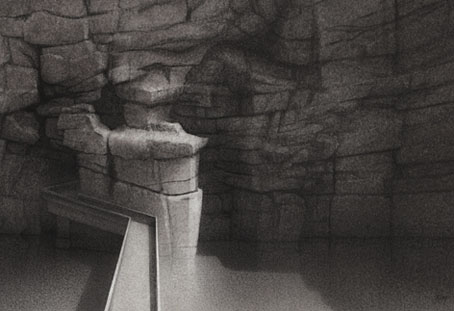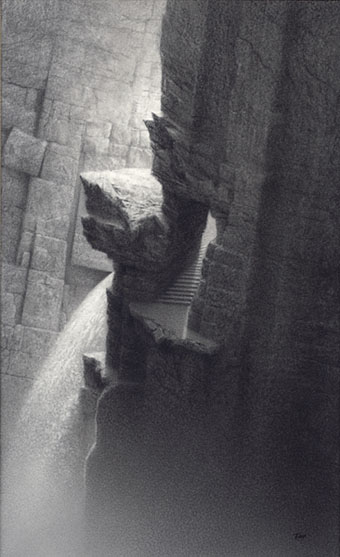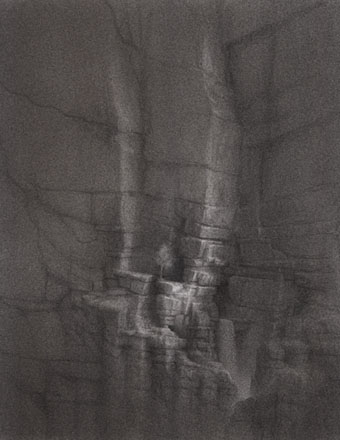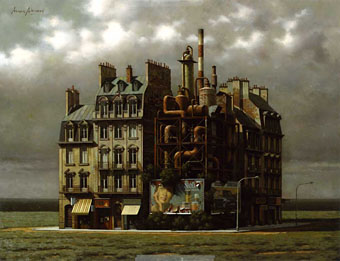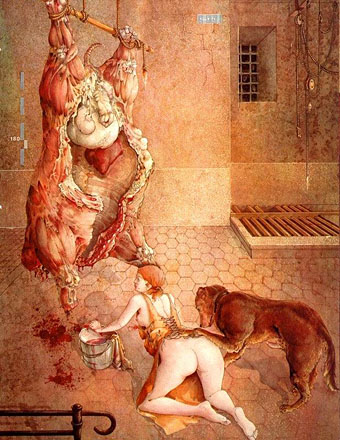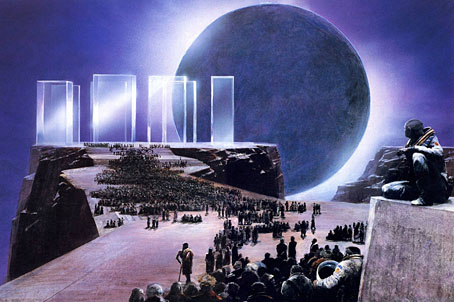
I might never have paid much attention to John Harris’s paintings if they hadn’t appeared so often at Adam Rowe’s 70s Sci-fi Art. Harris is also featured in Rowe’s new book, Worlds Beyond Time, with a few examples that sent me looking for more. I like science-fiction art when it’s dealing with megastructures, especially if those structures aren’t readily interpretable as buildings, spaceships or alien artefacts. This is SF art in the service of the philosophical Sublime, a quality which, since the 1940s, you don’t find very much in painting outside the work of illustrators or artists of the fantastic. Some of these structures, like the one that Harris calls “The Wall” (below), might be relatives of the abandoned concrete edifices in Jean-Pierre Ugarte’s paintings. Another point in Harris’s favour is the way he uses SF-like imagery as outlets for his own visionary experiences: there’s a series entitled Mass which depicts images that came to him following a period of transcendental meditation. The Mass series later gave a title to the first book of Harris’s art which was published by Paper Tiger in 2000.
